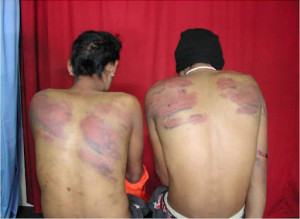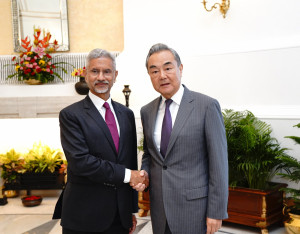National
PM downplays growing pessimism. Youth exodus suggests otherwise
Prime Minister Dahal tries to counter popular perceptions that Nepalis’ future is bleak, asking observers to look at positive national indicators too.
Prithvi Man Shrestha
When Prime Minister Pushpa Kamal Dahal addressed the nation on December 26, he discussed the growing sense of pessimism about the country’s future.
“The flames of pessimism and negativity are being fueled from all directions. Creativity in society is being stifled at its roots by the negative attitude that nothing can be done and nothing noteworthy happens here. One group is fanning the fire, nurturing such sentiments,” he said, asking observers to assess whether the claim that nothing good has happened in the country is indeed true.
He listed out a lot of positive developments happening in Nepal including the agreements he signed with India and China, export of hydropower, revival of the economy from the brink while announcing several measures to improve the state of the country’s affairs.
Three days later, on December 29, thousands of youths desperate to go to South Korea for jobs protested at Balkumari in Lalitpur after they were denied a chance to apply for the Korean language test, citing a South Korean policy.
The protesters were the youths who earlier failed the language test, passing which makes one eligible to apply for shipbuilding jobs in Korea. They wanted to sit another exam to be eligible for manufacturing jobs too, but they were not given the language test for manufacturing jobs citing the Korean government’s policy of not entertaining the one job’s applicants for another job in the same year.
As the vehicle of Physical Infrastructure Minister Prakash Jwala arrived there, the protesters burnt it down, sparking clashes with the police. In the confrontation, two youths aspiring to go to South Korea lost their lives.
“This incident shows that people are not optimistic about their future in this country as the country’s political organisations have failed in their missions,” said Hari Roka, an analyst on political economy. “People are desperate to leave the country as they have lost hope that they can substantially improve their living standards staying in this country.”
Roka said it was natural for people to want to go to South Korea because the remuneration there is much higher than in the Gulf countries and Malaysia.
According to the Department of Foreign Employment, as many as 143,812 youths have applied for Korean language proficiency tests for 15,800 manufacturing jobs offered by Korean employers. Now, with the government allowing even those who earlier failed the language test for shipbuilding jobs, an additional 28,000 people will be eligible for the test.
The country is not only seeing large crowds apply for South Korean jobs, over 2,000 people leave the country every day for foreign employment, the department’s data show.
In the Nepali month of Mangsir (mid-Nov to mid-Dec 2023) alone, as many as 71,276 individuals received labour permits to take up foreign jobs, according to the Foreign Employment Department.
During the first five months of the current fiscal year, as many as 277,592 workers obtained permits from the government to go for foreign employment including fresh and repeat migrant workers, the department said.
In the fiscal year 2022-23, as many as 771,327 got labour permits, a must for flying to foreign job destinations, according to the statistics with the department.
The remittances sent by the country’s expat population has been a major source of livelihood for many families back home and also the source of foreign exchange for the country. Nepal’s forex reserves stood as high as Rs477.96 billion during the first four months of this fiscal, with a rise of 26.4 percent year-on-year, according to Nepal Rastra Bank.
“It is natural that many people want to go for foreign employment because of relatively attractive wages offered by the companies there compared to the firms at home,” said Jagadish Chandra Pokharel, former vice-chair of the National Planning Commission. “They can save more from the earnings.”
Students are another group leaving the country en masse. As many as 110,000 students acquired No Objection Certificates (NOC), a consent issued by the Ministry of Education, to study abroad in the last fiscal year. This number does not include the thousands of Nepali students enrolled in Indian academic institutions.
Nepali students spent Rs67 billion on their foreign studies in one year.
The trend continues. As many as 45,000 students have acquired permits to study abroad in the first five months of the current fiscal year.
Like the protests of the youths who were initially barred from sitting the ‘Employment Permit System [EPS]–Test of Proficiency in Korean’ on December 29, students had also protested in a similar fashion when the government in April 2023 denied NOCs to students for joining diploma, advanced diploma and language courses abroad.
The government was forced to roll back its decision. Most of the academic institutions in Nepal are facing a shortage of students due to their leaving the country in large numbers.
“One reason behind the continuous exodus of students is the poor quality of education here, which does not make them competitive in the job market,” said Pokharel. “On the other hand, young students are not optimistic about their future due to the state of the country’s politics and economy.”
Besides going abroad for education and jobs, hundreds of Nepalis are learnt to have joined the Russian army, which is currently at war with neighbouring Ukraine, and seven of them have already lost their lives, according to the Ministry of Foreign Affairs.
In an interview with the state-owned National News Agency last week, Foreign Minister Narayan Prakash Saud also said that around 200 Nepalis are estimated to be serving in the Russian army.
While there is a growing trend among the youths to migrate abroad, those who remain in the country express frustration with the current state of affairs. Their discontent is occasionally reflected in protests, according to analysts.
Arun Subedi, a foreign policy advisor to ex-prime minister Sher Bahadur Deuba, said the country has witnessed sporadic and unorganised protests fuelled by public anger over the state of the country, economic crisis and rampant corruption.
“You can see how the businessman Durga Prasai drew crowds in recent protests in Kathmandu,” said Subedi.
Prasai has become a controversial figure for allegedly seeking personal benefits based on his past ties with the leaders of the CPN-UML and the CPN (Maoist Centre).
He tried to rally people behind him under the slogan of restoring Hindu kingdom and working in favour of small borrowers who are struggling to repay their bank loans.
People’s anger is also directed at leaders of major political parties. The latest case is the attack on Minister Jwala on Friday.
Growing discontent with major political parties and their leaders appears to have benefited new political forces like Rastriya Swatantra Party led by Rabi Lamichhane, and leaders like Kathmandu Mayor Balendra Sah and Dharan Mayor Harka Sampang—the latter two were elected to the posts as independent candidates.
Analysts said that attraction towards new forces was natural given the failure of the old parties and leaders to give people hope.
“The question is what alternative vision do these new forces have,” asked Roka. “I don’t see anything compelling in them.”
Subedi, also a political analyst, defends the current political system as one having no better alternative. “But we need a surgical intervention in the current economic policy that is more state-led than the private sector-driven. This has hampered the country’s economic prospects.”




 19.2°C Kathmandu
19.2°C Kathmandu
















